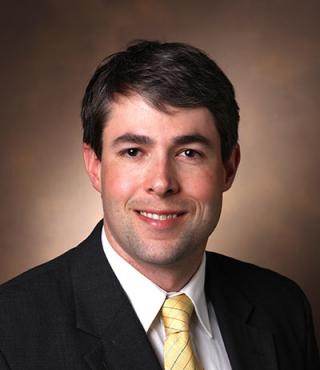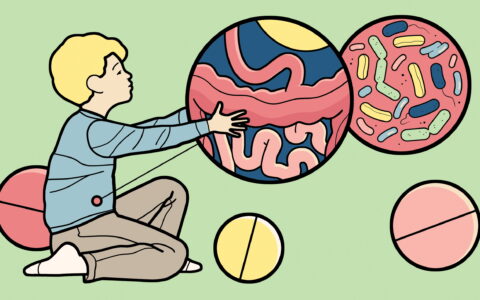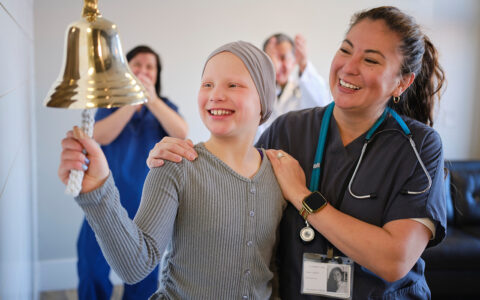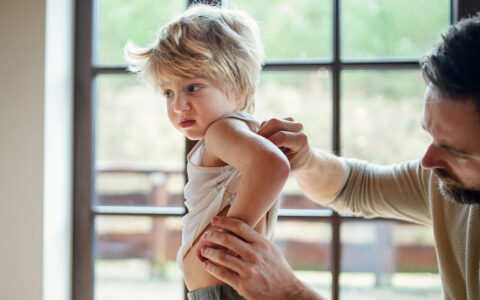Growing evidence on the benefits of early intervention for children with cerebral palsy has led pediatric physiatrist Elizabeth Martin, M.D., medical director of pediatric rehabilitation at Monroe Carell Jr. Children’s Hospital at Vanderbilt, to explore the epidemiology of cerebral palsy in Tennessee.
“We are increasingly learning the difference early treatment can make in their mental, psychological and physical development over the long term.”
Monroe Carell houses one of the largest NICUs in the Southeast, where hundreds of children who are at risk for cerebral palsy and developmental delays are evaluated each year, with plans underway to expand services and care for this population.
“We see so many of these children, but there are many more in Tennessee who aren’t on anyone’s radar,” Martin said. “This is concerning because we are increasingly learning the difference early treatment can make in their mental, psychological and physical development over the long term.”
Piggyback on Autism Registry
Today, the incidence of cerebral palsy is about 2 per 1,000 live births. About half of these children are born prematurely. Other factors associated with an increased risk include low birth weight, preeclampsia, maternal infections and multiple gestation.
“Since it is the most common motor disorder of childhood, we know the numbers are large, yet no one has actually tracked the epidemiology,” Martin said. “We want to make sure that we really are caring for all the kids across the state, because there aren’t a lot of other good options out there for many families in Tennessee who live in rural or small-center settings.”
To conduct a state search, autism expert Zachary Warren, Ph.D., director of developmental medicine at Vanderbilt University Medical Center, has arranged for the hospital to piggyback on a CDC autism spectrum disorder registry grant.
“We are now one of four United States sites to share this framework and infrastructure to track prevalence and monitor how children with cerebral palsy are treated,” Martin said. “The registry will enable us to loop them into ongoing care and track their outcomes.”
A Neuroplasticity Window
Pediatric neurosurgeon Robert Naftel, M.D., explains that historically, a lot of the diagnoses have come late, even up to 4 years after birth.
“The sooner we medically intervene, the better outcomes we have for these kids.”
“We know that symptoms typically develop between birth and age 3, and the sooner we medically intervene, the better outcomes we have for these kids,” he said.
“I’ve met a lot of older children where the early signs were there but nobody ever put the puzzle together, particularly if the symptoms were mild. So, they have been left coping with things their whole life, because they never got the interventions that could have made a really drastic difference for them. We do a lot of catch-up work later on, but it’s not the same as really addressing things proactively,” Naftel added.
Martin says that early, pre-surgical rehabilitation and other therapies can be used to capitalize on the brain’s peak neuroplasticity.
“If we can capture that neurodevelopmental stage before they turn 3 and help the brain recover, they are less likely to need more invasive procedures,” she said.
Expanding Surgical Indications
Surgery frequently provides benefit. Selective dorsal rhizotomy can relax muscles, helping children live with less spasticity, contracture, and joint and bone deformities, and walk with a more natural gait.
Historically, this procedure has been reserved for ambulatory children aged 4 or older, with bilateral paresis and without dystonia, Naftel says. As the only surgeon in Tennessee performing these rhizotomies, he has been expanding the candidate pool to include younger children, children only affected on one side of their body, and some more severely affected children.
After evaluating a lumbar dorsal and ventral rhizotomy with conus-level laminectomy, Naftel may offer a surgical option to families whose child is never expected to walk.
“In these more severe cases, the surgery does not enable them to walk, but has the palliative benefits of helping them with the tightness in their legs and making it easier for parents to change their diapers and keep them clean and comfortable,” Naftel said. “Hopefully it also improves or avoids some of the orthopedic problems children with tight muscles and contractures develop.”
Specialties Converge
Monroe Carell, like many large centers, has been staffed with individual providers at multiple sites to make care available for these children. Now, they have coalesced into a comprehensive Spasticity Clinic, where specialists in neurology, orthopaedics, neurosurgery, developmental medicine, pediatrics, and physical, occupational and speech therapy can work under one roof, seeing the same children and has published guidance for other [surgical] teams.
“Children with cerebral palsy represent a very heterogeneous population, and there isn’t a single patient who has needs that just one specialist can address,” Martin said. “They need tailored care from a team where we talk to each other, and they need that care from birth all the way through childhood and often into adolescence.”







